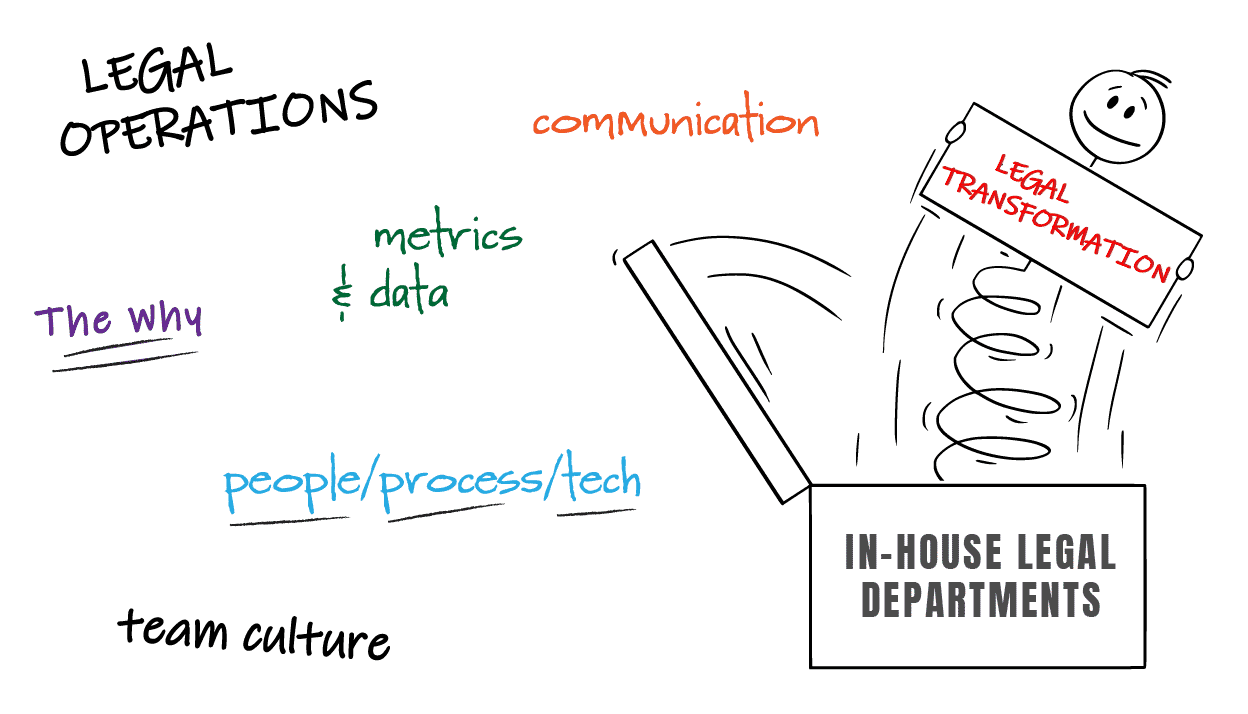
I attended the Consero Corporate Legal Operations Forum last week in person and found it thoroughly enjoyable. A vibrant mix of legal ops experts, in-house counsels, ALSPs and tech providers shared their experience and expectations for tomorrow’s legal work.
After three days of roundtables, panel discussions and socializing, it became clear that shaping legal transformation requires six core elements.
THE 'WHY'
Change can be exciting or terrifying. No matter where you stand, the first question that needs to be answered is why change? It could be because processes are obviously outdated or inefficient; because new leadership wants to steer the company on a different path; or because people are struggling to keep up with workloads. Whatever the reason, change can only be successful when it’s clear why it’s needed or expected. As Tariq Abdullah explained at an event earlier this week, legal ops is mainly about “giving people their time back” and that’s invaluable in today’s world.
LEGAL OPERATIONS
In many ways, legal ops is still in its adolescent stages so there’s never been a better time to shape the function and define the what, how and why. When in-house legal departments are endlessly playing catch-up on an increasing workload, existing lawyers just don’t have the time to consider legal transformation. That’s where legal ops professionals step in; they have the expertise and process management skills to implement the right change at the right time.
PEOPLE / PROCESS / TECH
Legal tech brings a wide range of benefits for all parties and corporate leaders will rarely decline an opportunity to streamline existing processes. However, transformation doesn’t mean technology alone – tech is only part of the solution. Without the right mix of people, processes and technology, transformation efforts might stall. A positive move towards a new target operating model means a review of who does what and how.
METRICS & RELIABLE DATA
For too long, legal departments have operated as small law firms and have not matched up to the standards of other back-office business functions. Historically in-house legal teams have not needed to articulate what they deliver to the business – this is changing. When an in-house team can present reliable, up-to-date data against clear metrics and KPIs, there is a structure for measuring efficiency and stakeholder satisfaction. Transforming a legal department isn’t easy but it’s even more difficult to go from A to B if you don’t know what A is.
COHESIVE TEAM CULTURE
Look at successful teams in your company; odds are they are made up of diverse personalities, backgrounds and strengths, brought together by mutual respect and a shared willingness to deliver. A modern legal department is not just a team of lawyers; it must be a high-functioning group of lawyers, legal ops experts and paralegals from all walks of life with different skillsets. Every legal department should strive for diversity and alignment, especially when trying to transform the way it operates. Delivery transformation requires buy-in from the whole team, not just the top.
COMMUNICATION
In order to succeed in any change program, frequent and clear communication is required at multiple levels. Where the decision to change comes from doesn’t really matter; what matters is getting everybody on board. Often communication is left until the end of a change project rather than being a continuing dialogue along the project timeline. Talk about it, explain it, get feedback from peers, direct reports and senior management. It seems so simple but it’s not always obvious. Transformation programs deliver their objectives when there is an inclusive communication plan which begins on day one.


